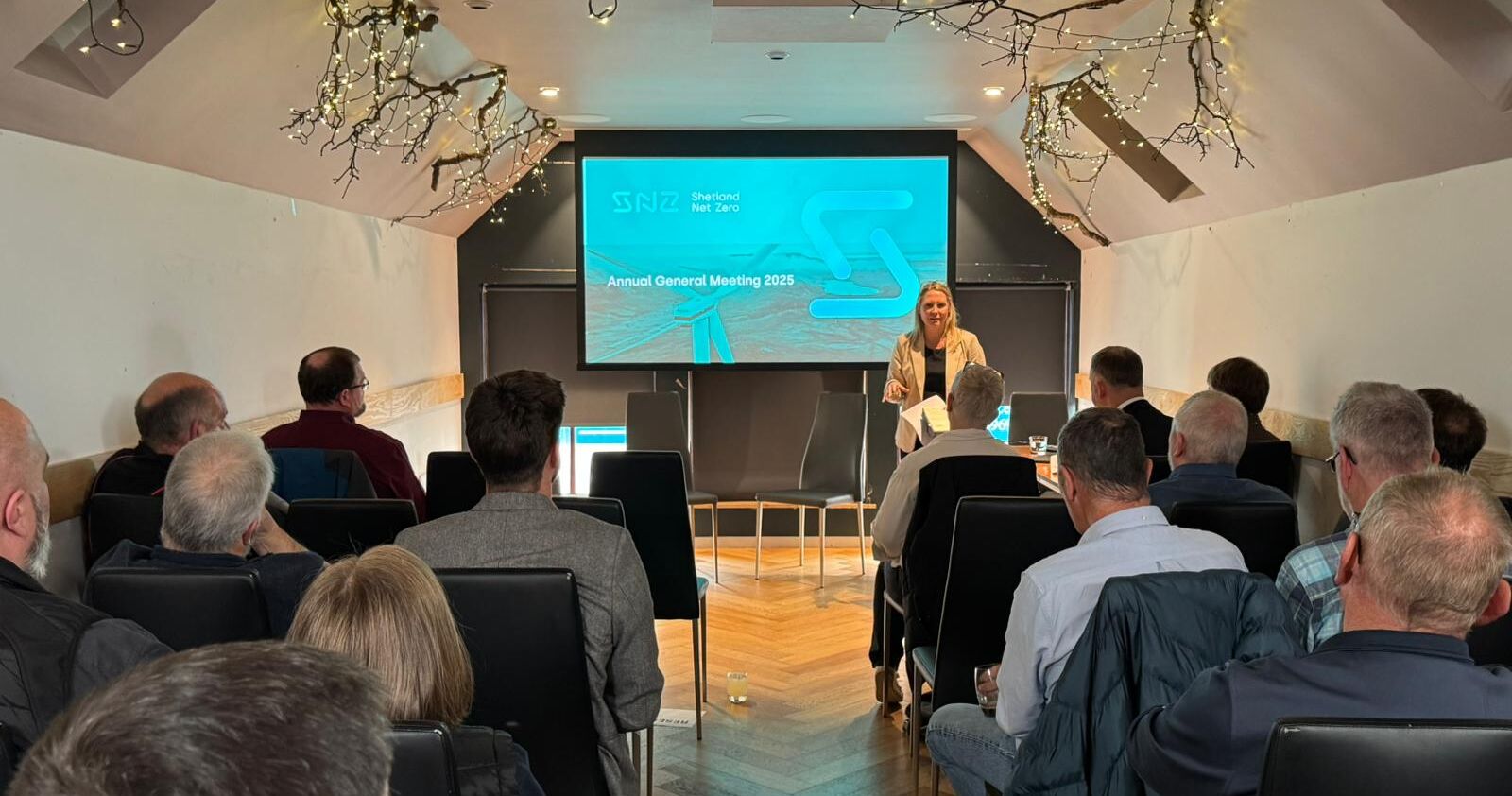By David Thomson, Chief Executive of Shetland Aerogenerators Ltd.
In July's edition of the Shetland Times' 'Energy Zone' David Thomson, Chief Executive of Shetland Aerogenerators Ltd., shared his views on the importance of Net Zero to Shetland.
At the Shetland Net Zero Energy Forum AGM recently, we were lucky to have Claire Mack OBE, Chief Executive of Scottish Renewables as a speaker. One of the topics of discussion was the meaning of the term Net Zero, which is being increasingly used as political rhetoric rather than the beneficial objective it should be.
From that discussion, it is clear that Shetland has much to lose if we give up on Net Zero.
We are about a year away from Shetland’s electrical grid being mostly decarbonised. Once SSE’s Grid Supply Point at Gremista is commissioned then homes and businesses in Shetland will be able to receive power from the National Grid and the Viking Wind Farm instead of the previous Shetland mix. The numbers bear a moment of explanation. The latest Shetland Islands Council Annual Climate Change Progress Report for 2023/24 has 660 grams of carbon dioxide per kilowatt hour for grid electricity in Shetland. This is consistent with The Shetland Energy Source Analysis work as far back as 2018 that found 668 gCO2/kWh. In comparison the UK Government published National Grid emission factor for 2025 is 177 grams of carbon dioxide per kilowatt.
As strategic grid upgrade projects now underway get built, the Viking Energy Wind Farm will be less constrained and will be able to feed the Shetland distribution system. When that happens Shetland’s grid will be running in the order of 15 grams of CO2 per kilowatt. Fifteen. This matters. Whatever opinions there are about how productive or not the wind farm will be, Shetland will reduce its electricity emissions overnight to a fraction of their current levels. SSE estimates that Lerwick Power Station will reduce carbon emissions by around 97%. That’s hundreds of thousands of tonnes of greenhouse gas no longer spewing into our atmosphere. Every year. We will move from being one of the dirtiest, most-polluting regions (per head of population) to being one of the cleaner. Be under no illusion however, Shetland will still have an incredible amount of emissions from land-use, industry and transport to tackle next which are not connected to the electricity system.
So Shetland seems to be underway at this ‘Net Zero’ thing but it perhaps needs to be discussed that there’s emerging opposition to the term.
A good example was the substation explosion in March at North Hyde that cut power to 17,000 houses, hospitals and, noticeably, Heathrow Airport. For the record – and there is one – a Government commissioned review found that moisture in a transformer was noticed in 2018 but not acted upon, which led to catastrophic failure in 2025. Simple mismanagement and nothing to do with windmills or solar panels. Yet some political parties are still using it as an example of why Net Zero should be stopped. There’s going to be more of this. Many people and populist politicians have no idea what they’re talking about and are making sweeping and incorrect claims about the costs and effects of Net Zero.
Somewhat importantly, bills will go up even more if we don’t address Net Zero. Aurora Energy and others report that using gas and carbon capture instead of offshore wind supported by Contract for Difference agreements will cost an extra £10 billion over a decade. We need to end our crippling dependency on oil & gas, not prolong it. We’ll also have lost billions of pounds of investment in new infrastructure with no proposals for replacing aged, outdated plant. Remember that badly-maintained North Hyde substation? It’s hardly going to get better if we stop replacing such items.
Shetland has much to lose if we give up on Net Zero.
Decarbonising our local electricity system is a first step to improving our air quality while fighting climate change, but Net Zero in Shetland goes much further than that. There’s now a wide range of projects, from the large to the small, being proposed that will help Shetland work towards Net Zero and in doing so we can meet some of this community’s most desperate challenges.
The single biggest point of feedback at the public exhibition for my company’s Neshion Energy Park project next to Sullom Voe Terminal was around fuel poverty and energy bills. Our project is now committed to a local electricity discount scheme to help those struggling with cost-of-living inflation.
There are now scores of high-skill jobs working here in renewables and in businesses that have relied on ever-diminishing oil & gas activity. We need to develop alternatives for the 600-strong workforce at Sullom Voe Terminal who are the remainder of a site now running at less than 10% historic throughput. We don’t just need to attract new workers to Shetland, we need to find new opportunities to keep our school leavers and young workforce here at home as well. Net Zero gives us the innovation and technology opportunities to address all of this.
Climate change and human activity is already hurting Shetland's environment. 70% of the peat across the central mainland is degraded. Net Zero is a chance to pay for habitat and peatland protection and restoration. Our land, air and marine species lists are changing. Net Zero is critical to abating species decline and supporting conservation measures that everyone likes but no one has the money to spend on. Net Zero projects do. Neshion Energy Park has identified acres of land around our site that could be brought back into stable condition with corresponding opportunities for projects to help birds and creatures nearby.
Net Zero means much more than abstract Government targets, and Shetland has much to lose if we give up on Net Zero.


